Greetings!
Keep travelling!
Uncle Travelling Matt
This week’s posting is a little earlier as I’m off this evening for a weekend of learning with my trade union. As part of the GFTU they run some excellent courses for members. This one is about ‘Understanding the Economic Crisis’ (I wish I did), whilst the last covered ‘International Solidarity’. A weekend immersed in Cuba, Venezuela, Bolivia and other Latin American states has made me think seriously about future plans to visit the region. Watch this space… comrades.
Uncle Travelling Matt
Flickr album of this journey
Links to other parts of the the travelogue:
Jaipur
It was dark when we rolled into Jaipur's main station. I took a tuk-tuk through the busy streets to my prearranged hotel, 'Stephels Guesthouse' (500 rupees p/n) and then headed straight to an internet café before it closed to upload some videos and engage in a conversation with Nina, a former colleague of mine which was most fitting since, although Pakistani, she is a descendent of Rajputs, the noble class of Rajasthan.
'Stephels Guesthouse' was unlike the other establishments that I'd stayed in so far in India in that it was aimed at the backpacker market rather than local business travellers or the package tourist trade. As such, it had a somewhat different ambience, being more than just a collection of rooms and instead centred around a small garden where one could sit and order beers. Having not had a drink since leaving Britain's fair shores, I decided to take up the opportunity and indulge in a bottle or two whilst reading 'Hinduism: A Very Short Introduction' in an attempt to try and comprehend something of India's majority faith.
My path to enlightenment that evening however, was to be barred, for JP, the hotel's proprietor, unable to bear seeing one of his customers drinking all alone, came and joined me and a few beers later was pouring out his entire life story. It transpired that my host for the night had been born into a poor Hindu family, made even poorer by the fact that his father had died when he was seven. But JP was – according to JP – a hard-working chap who so impressed his Muslim boss that the latter formerly adopted him and thus now he was running said adoptive father's Jaipur hotel, (he'd been working in the Chandigarh and Agra establishments before), being paid the princely sum of one million rupees per month for his efforts.1
JP's story might sound strange to our Western ears but out in India and it is not so weird. When I lived out in the Far East it was quite common for promising young men to be adopted by their bosses, (it is the case with the boss of Sony in Japan I believe), and not seen as unnatural, particularly if the boy in question has no father. In societies where corporate culture and loyalty are strong, then this is far more understandable than it would be in Europe with its strong individualism, although any reader of Dickens or our other famous novelists of the 19th century will realise that it was not so bizarre a concept to our Victorian forefathers. But for me, a fiery trade unionist who enjoys nothing more than bringing a substandard supposed superior to book, then such absolute subjection to your employer is nothing short of heresy.
But to be fair, in the case of JP at least, it does seem to work. He literally lived his job, sleeping on the floor like a common servant, 'Stephels Hostel' occupying his every waking minute and thought, and doubtless a few of his dreams as well. He may be spectacularly paid by Indian standards, but he also put up with far more than I could even imagine, let alone endure.
Which is probably why my salary has never been described using the word “spectacular”.
But as the night progressed we moved on from the mundane topic of work and onto the very essence of who JP was. He was not married but had once fallen in love with a “crazy Korean girl” who had been staying in the Agra hostel and had returned to India to see him. But his real love in life, the romance that brought him to tears, was not one of his own but instead love on the silver screen; Rose and Jack, meeting, falling in love and then dying on the 'Titanic'. “I have watched it twenty-two times,” he told me, eyes welling up as he played 'My Heart Will Go On' on his mobile phone.
Copious quantities of beer and heartfelt outpourings from a man in love with Kate Winslet do not make for an early start the next morning and it was around 11 o' clock before I was off. JP sorted me out a tuk-tuk who would take me around the sights beyond Jaipur, the idea being that I concentrate on the Pink City itself the next day.
My driver was a chirpy young Muslim chap who was delighted when I informed him that I was planning to visit Ajmer after Jaipur, and that I liked Qawali music2 very point. At this point he put on a tape of said Sufi singing and turned the volume up on his tuk-tuk's impressive sound system so that everyone knew we were coming as we careered through the picturesque streets of the Pink City. It truly was a great ride; the most aesthetically pleasing of all the cities that I'd visited so far in India although the image that most sticks in my mind is of a Muslim girl who we passed, whose top half was veiled as befits a modest lady, but whose legs were squeezed into a rather lewd pair of skin tight trousers that I'm not sure the Prophet would have approved of!
Our first stop was the Royal Gaitor (Cenotaph of the Maharajahs) on the very edge of town in a dip in the hills beneath the Tiger Fort. They were architecturally impressive monuments of finely-carved stone with a peaceful, tranquil ambience but just as interesting, if far less artistically remarkable was an ancient Shiva temple with a lingam.
Thanks to 'Hinduism: A Very Short Introduction', I was now aware of what a lingam is. A smooth, cylindrical stone, it represents Shiva, one of the principal Hindu deities, a representative of the Supreme God, part of the Trimurti – the Hindu Trinity – and partner of Shakti/Parvati, the Divine Female. The symbol itself is very ancient, possibly a relic of the pre-Hindu Indian religion and is thought by many to be phallic, (it is often found next to the yoni, the female symbol). Such aniconism – representing the Divine with symbols, not statues – is rare in Hinduism with its thousands of idols and many scholars believe that it became popular after Hindu culture met that of Islam which also shuns representations of both Divine and human forms.
I mentioned earlier that, as part of my preparations for the trip, I'd watched a number of Bollywood films and foremost amongst them was 'Jodhaa Akbar' which I've already discussed. Now however, it was time to clock up a few of the filming locations around Jaipur.
The first, which was reached via a rather pleasant mountain drive, Qawali music still blaring out as we swerved round hairpin bends, was Jaigarh Fort. A seat of the Maharajahs of Jaipur, (to whom there is a museum inside), this fort was noticeably barer and more austere than its counterpart in Agra, but the fortifications and location were impressive and I wandered around interested for a good hour or so, (some of it with an unasked for soldier guide who insisted on giving a rather unintelligible commentary not dissimilar to the one that I'd received at Fatepur Sikhri), notable stops en route being the Charbagh Garden from which there were incredible views down the valley to the more famous Amber Fort, the Jaivana Cannon which claims to be the biggest in the world and a puppet play.
After the Jaigarh Fort it was onto the Nahargarh Fort (commonly known as the Tiger Fort) at the other end of the mountain ridge. On the way we saw a rather strange temple with what looked like an observatory attached and so I asked Mr. Qawali to pause awhile so that I could find out more as I wondered if it was perhaps in some way connected with the Jantar Mantar, Maharajah Jai Singh's incredible astronomical observatory in the centre of Jaipur.
Upon visiting I found that the temple was dedicated to Krishna, in my opinion the most accessible of the Hindu deities and the bearded Brahmin presiding blessed me and tied a sacred thread around my wrist. As for any astronomical connections though, I never learnt one way or the other, although when I visited Jantar Mantar the following day, the temple was clearly visible and seemed to be in line with some of the instruments there.3
We continued onto the Nahargarh Fort, outside of which is a terrace which commands incredible views across the city of Jaipur. Whilst photographing them I fell into conversation with a businessman from Delhi who was visiting with his family, and attracted the attentions of some kids who wanted their photos taking. What struck me as whilst they were all very forward and modern, just behind them stood a girl in traditional Rajasthani costume, silent and unmoving, her whole face hidden by an orange veil.
The Nahargarh Fort was quite different to the Jaigarh Fort even though both dated from the 18th century and were connected with the Maharajahs of Jaipur. Whilst the latter was very much a fortress, this was far more a palace, set around a rectangular courtyard. In fact, for some reason that I can't quite place, it reminded me strongly of the Topkapı Palace in Istanbul, but unlike the Ottoman edifice, Nahargarh Fort was rather dilapidated in parts including several dark rooms absolutely full of sleeping bats.
Having sampled the two hilltop forts, we then headed down the mountain to the most famous fort of them all: Amber. This was Jodhaa's home in 'Jodhaa Akbar' and I remembered the scene when Akbar rode up the steep road to its main gate on an elephant as I laboured up the same road on foot.
Amber Fort truly is spectacular. Many years before I ever clasped eyes on the delectable Aishwarya Rai in 'Jodhaa Akbar', I watched the even more scrumptious Indira Vama cavort in 'Kama Sutra: A Tale of Love'4 in a Rajput palace. That was probably the first time that I ever thought that India might be a place worth visiting and walking into Amber I realised that this was another ambition that I had fulfilled for I recognised this as the location for that film as well.
Learning from my Agra Fort experience, I took an audio guide and wandered around the fort/palace freely, taking in the sumptuous settings and spectacular views over the lake below, my only regret being that I didn't have either Aishwarya or Indira to enjoy them with. However, even with the greatest of all the Rajput forts to entertain and scantily-clad Bollywood beauties to daydream about, my feet were now tired and the tragic fact was that, this being my third fort of the day and with Agra Fort only two days before, I had seen as much palatial glory as a man can take in and so when I eventually emerged I was glad. Once again, India was proving to be too in-credible and I just wasn't managing to appreciate fully its wonders.
On the way back we stopped off to photograph the stunning – but inaccessible – Lake Palace and then to visit some obligatory tourist emporiums – I bought Tom a set of India pyjamas – before depositing me back at Stephels.
And that was that for the day except that, well, I'm afraid I have a rather embarrassing confession to make: that night I dined at McDonald’s. Yes indeed, in the heart of foodie heaven, I went straight to the bottom of the pile. And my excuse? Well, it was late and most of the other places were shut. But do you know what was worse? Well, I'm sorry to say it but I really enjoyed my McPaneer burger meal.
1According to JP. However, as that is around £13,000 per month, I suspect that there is a degree of exaggeration or perhaps misunderstanding here. 1,000,000 a year maybe, although that would still be an exceptional wage by Indian standards.
2Sufi devotional music
3Further research has taught me that this temple is called the Charan (Foot) Mandir and is sacred because there's a naturally-occuring footprint of Krishna there. As for the observatory, it's merely labelled as an 'observation tower' and no connections to Jantar Mantar are mentioned although I still suspect that the two are somehow related.
4N.B. This is not the X-rated film of the same name. It is ten times better than that one. Not that I've seen the other of course... well... maybe...

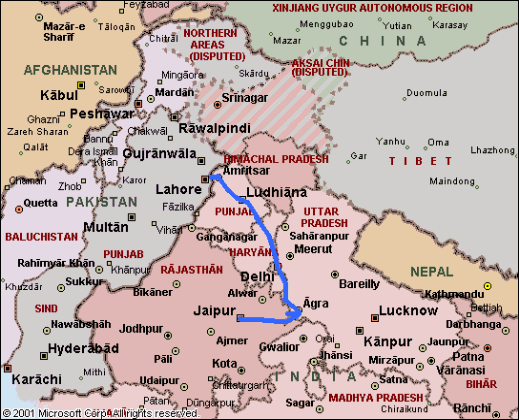
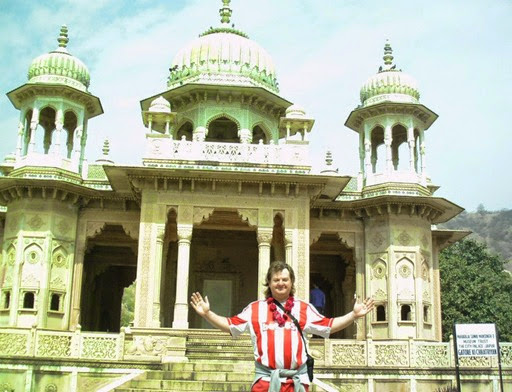
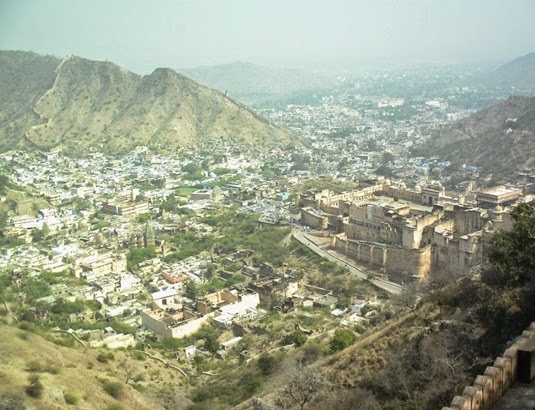
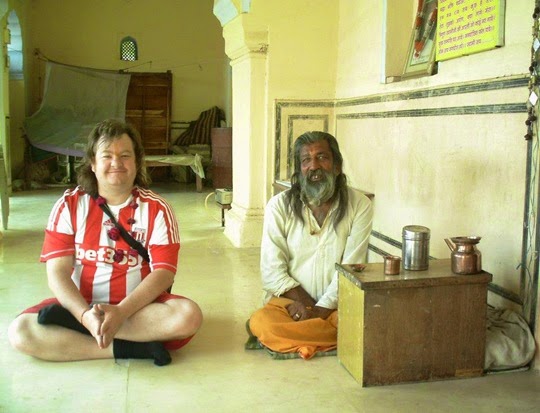

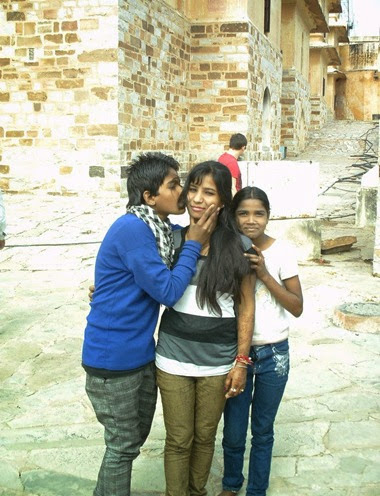
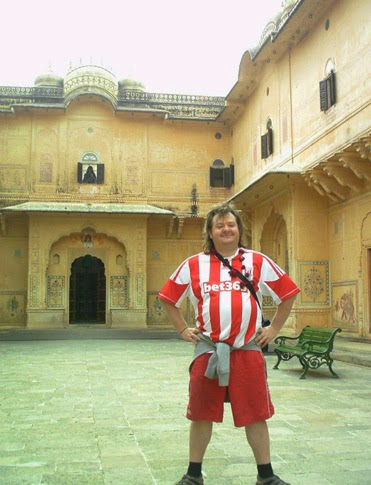
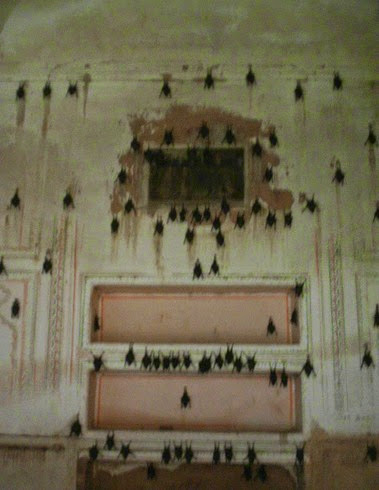
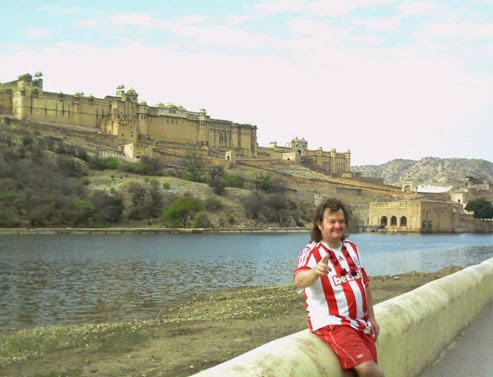
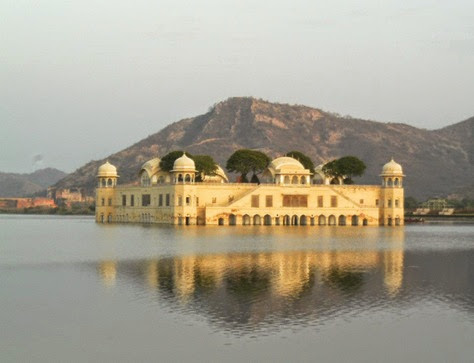
No comments:
Post a Comment